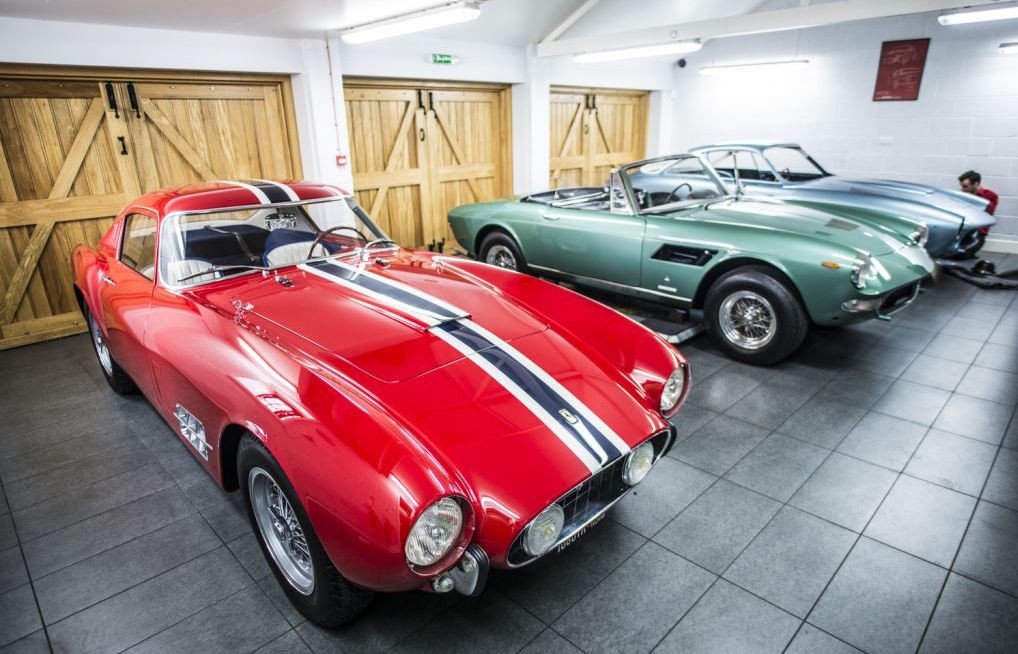How to Start a Vintage Car Collection
Starting a vintage car collection can be an exciting and rewarding journey. The allure of classic cars, with their unique designs and historical significance, makes them appealing to many enthusiasts. If you’re new to the world of vintage car collection, it might seem overwhelming at first. But with the right approach, you can build a collection that brings joy and can also be a sound investment. In this guide, we’ll walk you through the steps to begin your vintage car collection, ensuring you make informed decisions and enjoy the process.

Define Your Collecting Goals
Before diving into the world of vintage cars, it’s important to define your goals for your collection. Ask yourself what you hope to achieve. Are you collecting for personal enjoyment, investment purposes, or a combination of both? Understanding your objectives will help you focus your efforts and make better decisions.
Personal Enjoyment vs. Investment
If you’re collecting vintage cars for personal enjoyment, you might focus on models that hold sentimental value or those that you’ve always admired. On the other hand, if your primary goal is investment, you’ll need to consider factors such as market trends, rarity, and potential appreciation in value. Balancing these goals can guide your choices and help you build a collection that suits your needs.
Research and Choose Your Models
Once you’ve set your goals, the next step is to research and choose the models you want to include in your vintage car collection. The automotive world is vast, and there are numerous models to consider.
Popular Models to Consider
Some popular vintage car models that are highly sought after include the Ford Mustang, Chevrolet Corvette, and Jaguar E-Type. These cars are renowned for their design, performance, and historical significance. Research these models thoroughly to understand their features, market values, and potential for appreciation.
Understand the Market
Understanding the market is crucial. Familiarize yourself with current trends and historical values of the cars you’re interested in. Joining vintage car clubs, attending car shows, and reading automotive magazines can provide valuable insights into which models are currently in demand and which ones have the potential for future value.
Set a Budget
Before making any purchases, it’s important to set a budget for your vintage car collection. Determine how much you’re willing to spend on acquiring and maintaining each car. Keep in mind that vintage cars often require ongoing maintenance, restoration, and storage costs.
Budgeting for Acquisition and Maintenance
When setting your budget, consider not only the purchase price but also the costs associated with restoring and maintaining vintage cars. Some models may need more extensive restoration work, which can add to the overall cost. Ensure you allocate funds for these expenses to avoid surprises later.
Find Reliable Sources
Finding the right sources for purchasing vintage cars is a critical step. Reliable sources include classic car dealerships, auctions, and private sellers. Each option has its own advantages and risks.
Buying from Dealerships vs. Auctions
Classic car dealerships often provide a curated selection of vintage cars, with the added benefit of professional inspection and documentation. Auctions can offer opportunities to acquire rare models but may require more research and preparation. Private sellers might have unique vehicles but can present varying levels of risk.
Inspecting the Car
Regardless of where you purchase, always inspect the car thoroughly before buying. Look for signs of rust, check the engine, and assess the overall condition. If possible, have a professional mechanic who specializes in vintage cars examine the vehicle to ensure it’s in good shape.
Maintain and Store Your Collection
Once you’ve started your vintage car collection, proper maintenance and storage are essential. Vintage cars require regular upkeep to ensure they remain in excellent condition.
Regular Maintenance
Schedule regular maintenance and servicing to keep your cars running smoothly. This includes oil changes, checking fluid levels, and inspecting the tires. Regular maintenance will help preserve the value and performance of your vintage cars.
Proper Storage
Store your vintage cars in a climate-controlled environment to protect them from extreme temperatures and humidity. Proper storage prevents rust and deterioration, ensuring that your collection remains in top condition.
Join the Vintage Car Community
Finally, joining the vintage car community can enhance your collecting experience. Connect with other enthusiasts, attend car shows, and participate in events. This network can provide valuable advice, support, and opportunities to acquire rare and sought-after models.
Conclusion
Starting a vintage car collection involves careful planning, research, and a genuine passion for classic cars. By defining your goals, researching models, setting a budget, finding reliable sources, and maintaining your collection, you’ll be well on your way to building a collection that brings joy and satisfaction. Embrace the journey, enjoy the process, and celebrate the beauty of vintage cars as you create a collection that’s uniquely yours.

